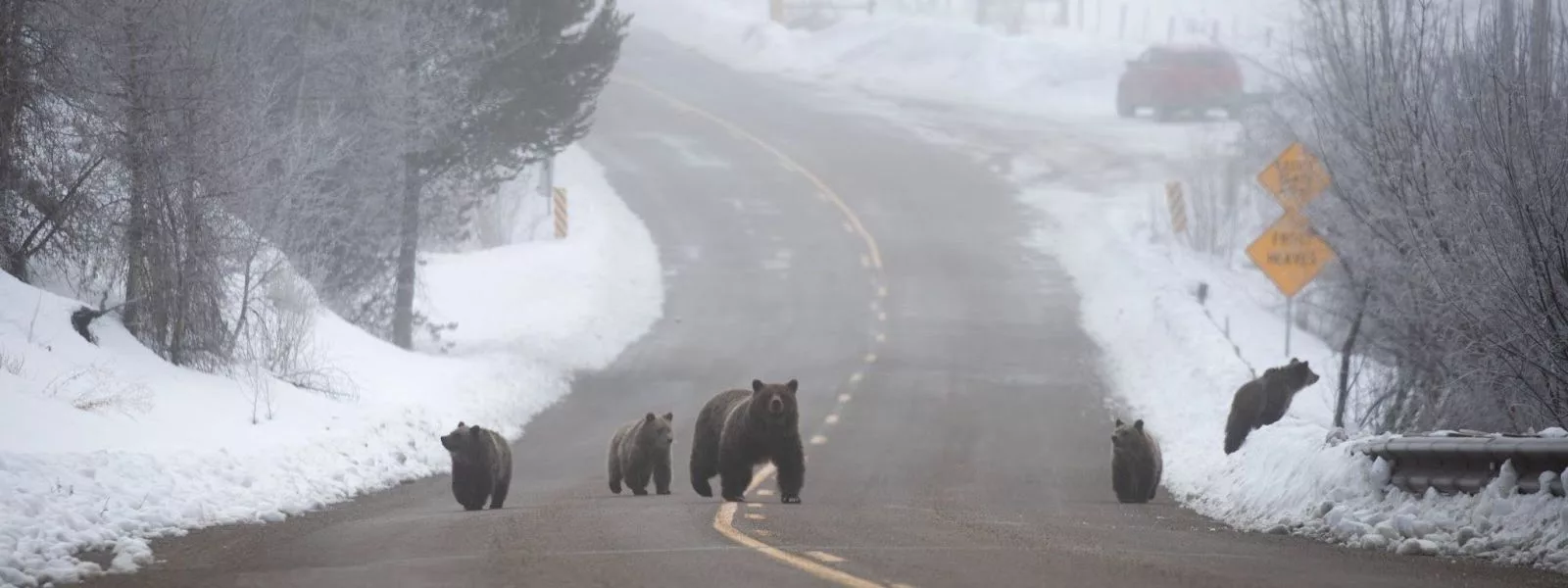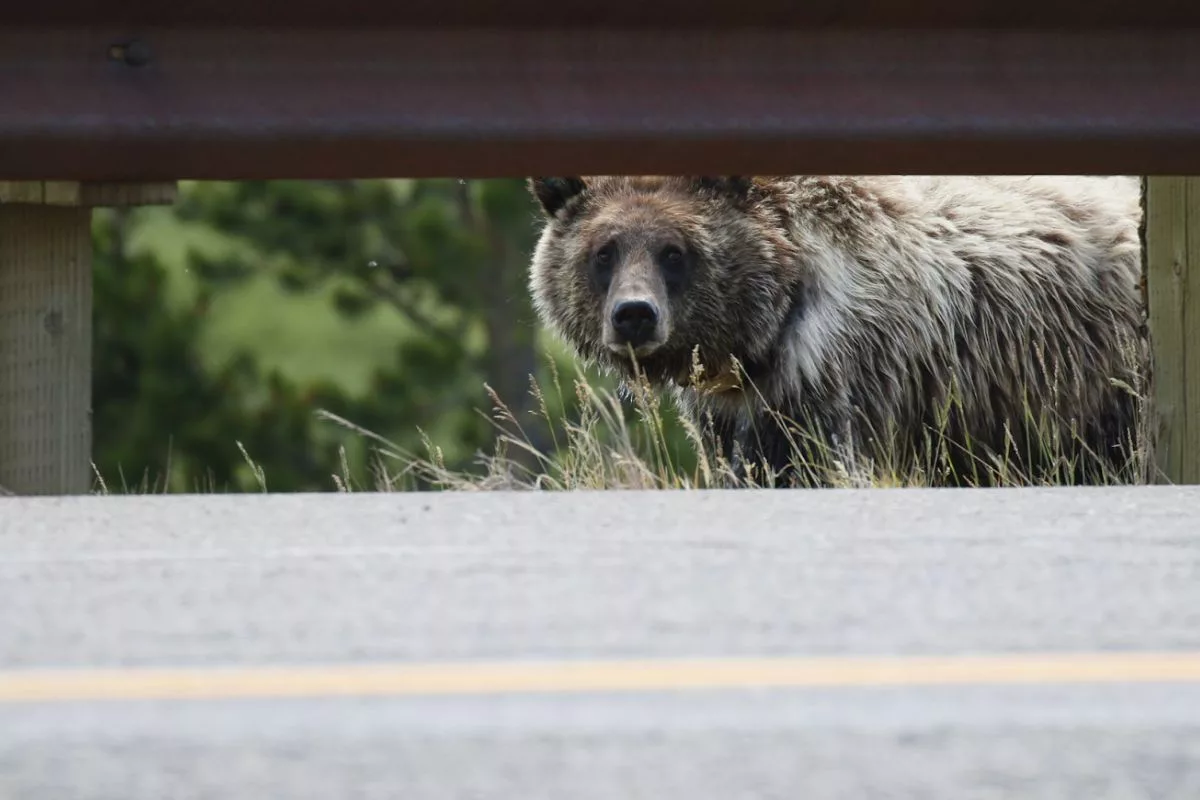
Stay Safe on Trails and Roads
In the vast and untamed wilderness of Wyoming, encountering a bear is an extraordinary and unforgettable experience. However, it is important to keep in mind that observing bears while maintaining a safe distance is absolutely critical for the overall welfare of the bears and for your own personal safety. When encountering a bear, it is important to exercise caution and adhere to the recommended safety protocols.
Good Bear Behavior
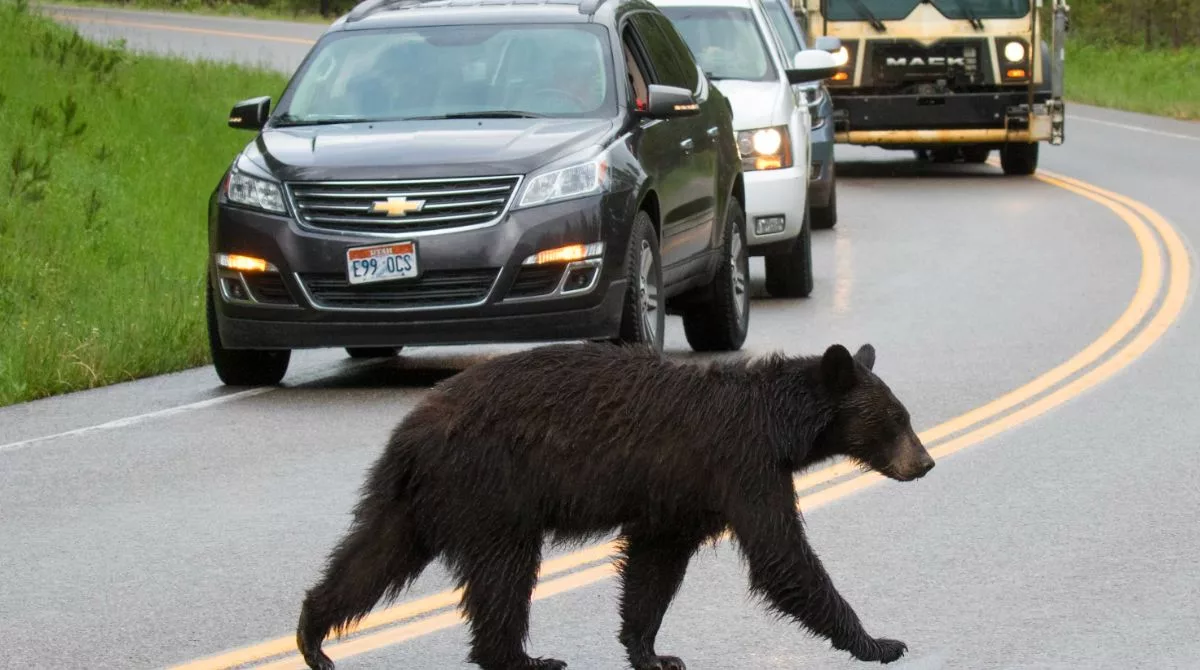
Keep Your Distance
Whether a bear crosses your path on a roadway or you come across one on a hike, it’s important to keep a safe distance to minimize conflict and maintain safety for both you and the bear. By staying back, you allow the bear space to retreat and maintain its natural behavior. It also helps foster an environment where humans and bears can coexist with minimal disturbance to their natural behavior and habitats. We recommend keeping a distance of AT LEAST 100 yards (300 feet), the size of a football field.
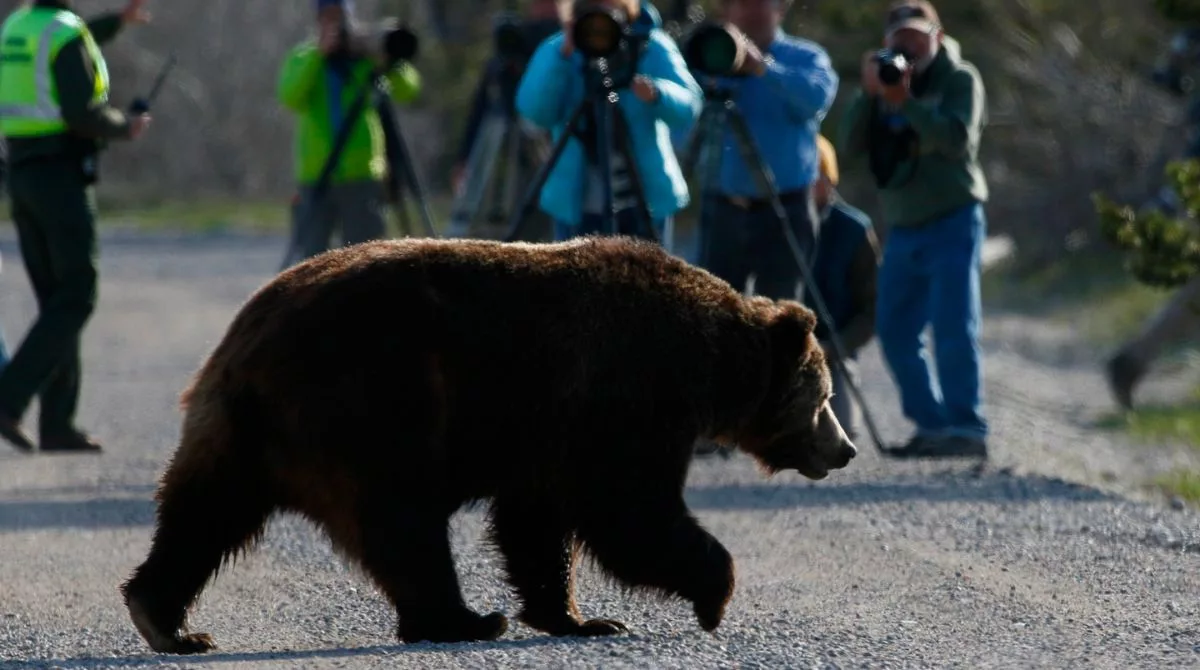
Stay in Groups
It’s important to hike in groups not only because it enhances overall safety, but also provides collective awareness and response in the event of a black bear or grizzly bear encounter. A larger group creates more noise, warning nearby bears of their presence. Larger groups also have a higher chance of spotting a bear from a distance, allowing for proactive measures to be taken. Also, bears are generally less likely to approach or attack a larger group of people.
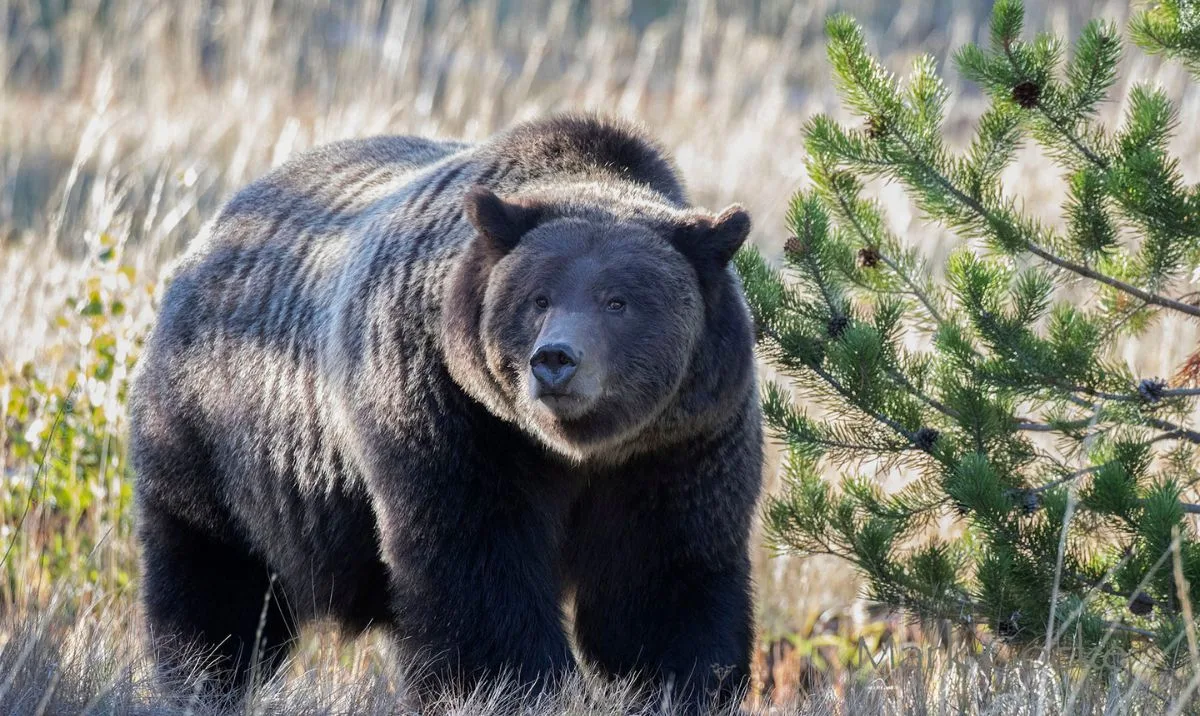
Make Noise
Making loud noises, such as shouting, clapping, or using noisemakers, can alert the bear to your presence and potentially deter it from approaching further or initiating an attack. Bears may be more likely to become aggressive or defensive if they are surprised or feel threatened. By making noise while hiking, you reduce the chance of surprising a bear at close range.
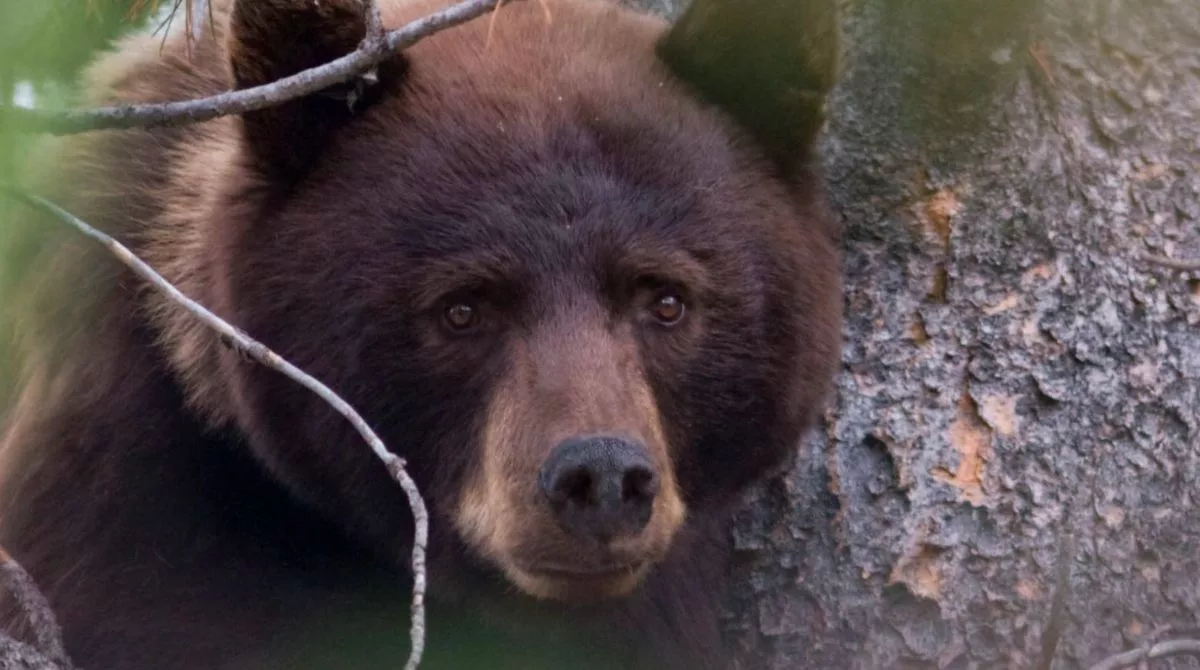
Be Aware of Surroundings
Being aware of your surroundings allows you to detect signs of bear activity or the presence of bears at an early stage. This includes identifying bear signs such as tracks, scat, claw marks, or fresh digging, as well as potential bear attractants like food sources such as carcasses, or berry patches. By recognizing these indicators, you can adjust your route or behavior to minimize the risk of an encounter.
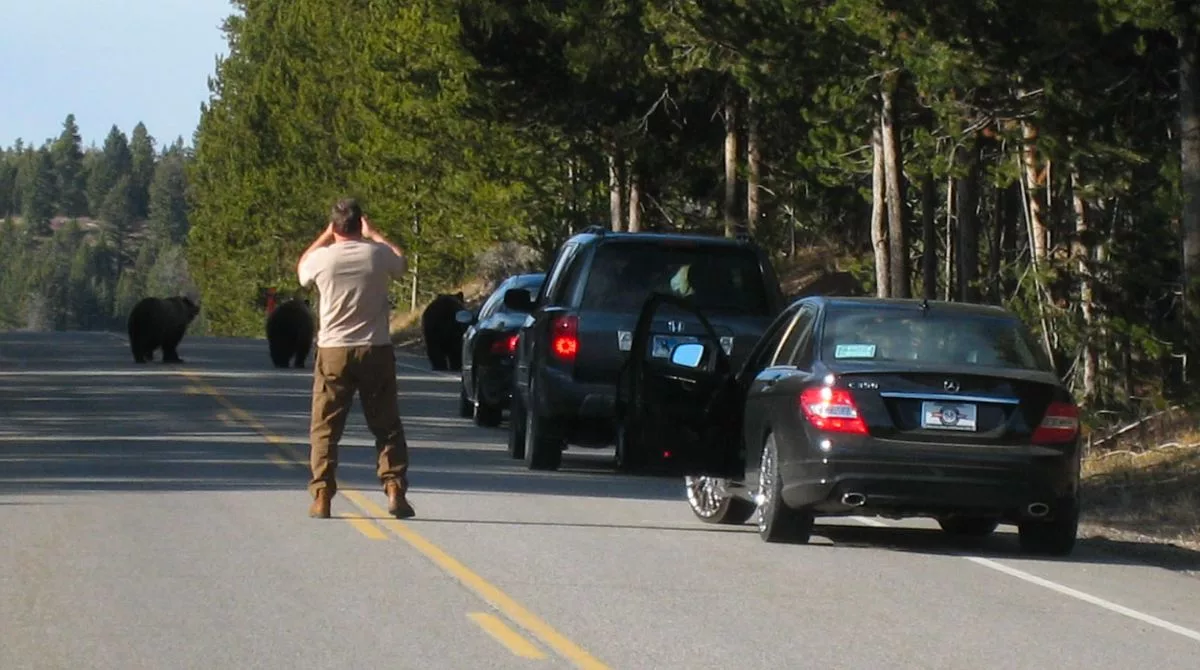
Stay in the Car
While staying in your car provides a layer of protection, it is essential to keep the car doors locked and windows closed and avoid any actions that may further attract or provoke a bear. Staying in your car also sets a good example for others in the area. It helps promote responsible behavior and allows you to maintain a calm and safe environment for both yourself and others present during the bear encounter.
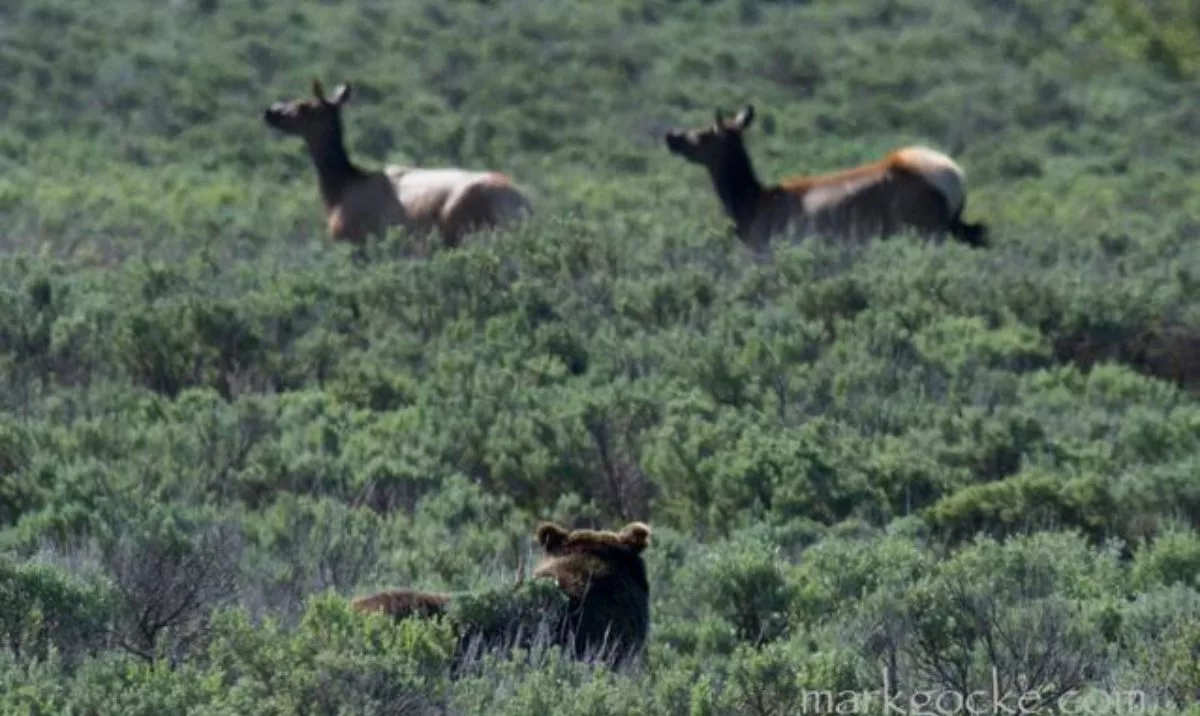
Animal Carcasses
Bears are highly attracted to animal carcasses as a potential food source. It is crucial to be aware that carcasses can draw bears to an area, and their presence poses an increased risk of bear encounters. Properly storing animal carcasses is essential for minimizing bear attraction. Carcasses should be stored at least 100 yards away from camping or sleeping areas and Forest Service system trails.
Don’t Block the Road
Blocking the road while viewing a bear can create unsafe conditions for both yourself and others. It may lead to distracted driving as people slow down or stop abruptly to observe the bear, increasing the risk of accidents or collisions. Maintaining a clear and open roadway ensures the safety of all drivers. When observing a bear from the road, it is advisable to find a safe and suitable parking spot or pullout where you can park your vehicle completely off the road.


